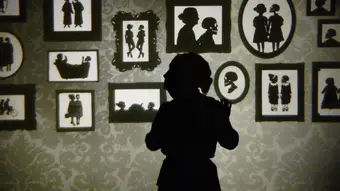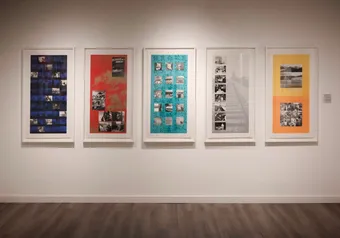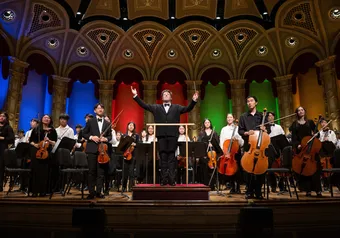Performing for only one night on February 7, Manual Cinema's Ada/Ava was by far one of the most impressive and engrossing pieces of theatre that I have ever experienced. The roughly one-hour work was an amazingly intricate show of coordination, practice and creative dedication that translated an incredibly difficult set of performances into an elegantly crafted final product that was at times heartbreaking and at others terrifying.
A performance of Ada/Ava is really two performances. There is what we see on the projected screen — a sepia-drenched, silhouetted film reminiscent of old classics from the early days of cinema — then there is the act of creating these images, which we can witness below the screen. It is an interesting decision to show the audience the behind the scenes of the play while the performance is going on, but a worthwhile one. A large part of the enjoyment from watching this play is in appreciating how difficult it is to produce the images that we see on screen.
[Sorry, video not found. You can contact webmaster@ubyssey.ca to fix the issue]
This task is done with a collection of relatively ordinary items that you would find in your average classroom. Four projectors are lined up side-by-side on a table, all of them aimed at a whiteboard. On another table, there is a large stack of transparent sheets, all meticulously labeled with act and scene numbers. To one side of this, there is the set up for a band, complete with cello, keyboard and an electric guitar. On the other side, there is the setup for sound control and a saxophone.
Ada/Ava is an example of shadow-puppetry at its most elaborate and realized. Every one of the roughly 400 clear sheets used in the production becomes part of a series of scenes constructed to resemble a complete film, only every frame has to be enacted in real time by four or five people moving little cutout figures across the bleak backgrounds of a seaside town.
In addition to these cutouts, several of the performers regularly interact with the projections in front of the whiteboard, carefully moving in accordance with the opening of drawers or the shifting of their own reflection. It was mesmerizing to watch, and unique because of how imperfect it is. The aim is not to create a pristine rendition of a story, but rather to embrace the innate roughness in all of its blemishes or shaky moves.
In that way, this was a better example of pure, old-fashioned cinema than anything you'll see in an actual movie theatre. So much of the magic is in seeing the clever ways that effects like lightning or the ripples in a mirror will be created with relatively simple means, and knowing that what you are witnessing is an entirely human creation as opposed to a computer-generated one.
[Sorry, video not found. You can contact webmaster@ubyssey.ca to fix the issue]
All of this would be for nothing if the story were no good. Fortunately, Ava/Ada's gothic tale of grieving and acceptance is excellent, mixing melancholy, humour and mortal fear into an emotional story full of subtle payoffs and tear-jerking moments of human emotion. This is all paired with a fantastic soundtrack that fuses surreal droning and sparse guitar notes with a haunting cello. Occasionally, the music even becomes jazzy and when it does, it helps to build some of the best moments in the work.
Manual Cinema's Ava/Ada was an unforgettable experience that will stick in my mind as one of the more impressive pieces of theatre/film/puppetry that I have ever seen. If you should ever have the opportunity to see them perform, take it. Your money and time could not be better spent.
First online
Share this article








